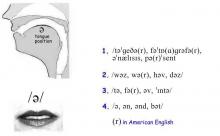Ever watched a film or play where the accent is really good but somehow not quite right? Often it’s the weak syllables that are out of place rather than the strong, obvious sounds.
So what is the ‘schwa’? Anyone who has studied English as a second language or learned a different accent of English as a native speaker has probably heard of it. It is the neutral, weak vowel that only occurs in unstressed syllables (unless the speaker is from New Zealand or South Africa, where it occurs in stressed syllables too in place of the stressed phoneme / ɪ / ).
Some key facts about the schwa:
- It is the most frequently occurring of all vowel sounds, but is not represented in spelling. The learner needs to become familiar with the rhythm and pattern of its occurrence and learn to associate it with certain letters and letter combinations, like ‘er’, ‘a’ etc.
- It is the resting point between strong sounds, sometimes even a whispered syllable, and its use is what makes English sound English.
- Its placement is ‘mid-central’, the tongue is held in a neutral position at mid height in the centre of the mouth, the lips are neutral and the jaw aperture only slightly open.
- It frequently becomes ‘whispered’ following the voiceless plosives ‘p, t, k’, more so in British English than American
The schwa, despite being represented by the same symbol / ə /, can actually sound very different from one accent to another.The difference between the British and American English schwa, for example:
British Received Pronunciation: /fə’tɒgrəfə/
General American:/fə’tɑgrəfər/
To fully master an accent like a native speaker, it is essential to master the weak forms and subtle background processes as well as the strong sounds. So where to start?
“Uh huh” is a great starting point. While we use it as a way of agreeing, acknowledging and buying time to think of what to say, it also reflects an accents central voice placement, the ‘resting place’ between strong sounds and emphasised syllables. Voice placement is the key point of tension or zone in the oral tract around which the sounds are based. One of the best ways to find an accent’s voice placement is to try speaking simultaneously with a native speaker with your headphones on, so you can hear the speakers voice but not your own, and observe the key point in tension in the tongue, jaw, lips etc. After you feel you’ve got that, maintain the tension and say ‘Uh huh’ and try to the aperture in the jaw, the tongue position etc.
Like to learn more? click here for some audio examples of the schwa in British and American English




